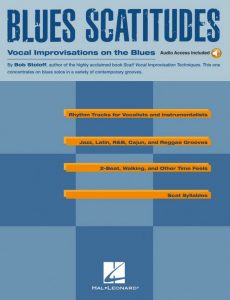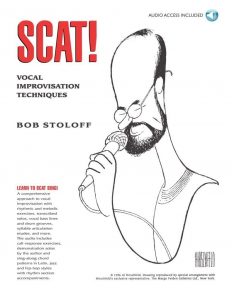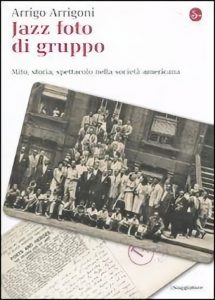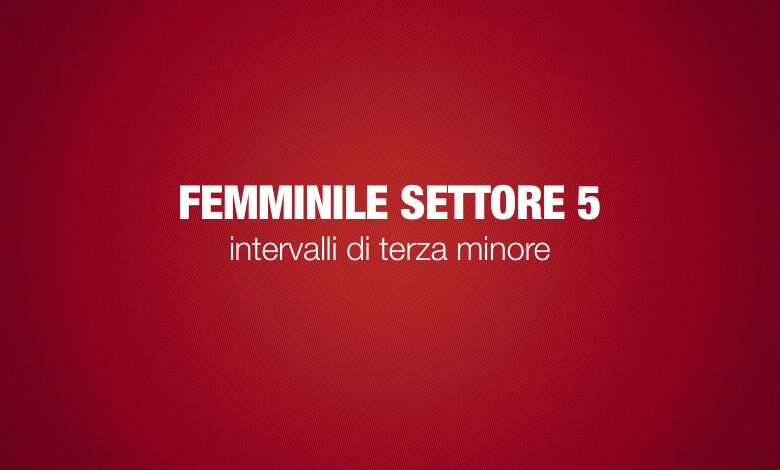Article index
Today in wandering between the bedroom and the kitchen, I reflected on the phrase that I wrote some time ago on the definition of "Scat Singing".
The scat singing always remains a way of conceiving improvised singing at the same time consists in wanting all in all approaching the musical world, using the oldest tool in the world: singing.
In my way of expressing myself and in my way of conceiving vocal sound, I believe that this word can be the element where I can insert me, if I had to build a stylistic belonging.
 First of all what is the scat singing?
First of all what is the scat singing?
Scat is a means of vocal expression sung, mainly linked to the musical style of jazz. This vocal expressive practice deprives words in favor of phonemi or syllables without meaning, seeking in its expression creations that lead the singer to use a particular language that allows him to build rhythmic-melodic improvisations, obtaining a result equal to any instrumental solo .
The first trace of vocal improvisation that can be called Scat dates back to 1924, when Don Redman and the Fletcher Henderson Orchestra engraved for Columbia Records "My Papa Doesn't Two-Time No Time" 20 'seconds of purity and a first shy experiment e Simple, where the syllables of-du or du-ba begin to be expressive rudiments of a no-session language.
Thinking and recalling my vocal path, this practice allowed me to approach the world of improvisation; My first approach was very close to hearing my voice close to the musical instrument that started me with music: the saxophone.
I cannot fail to mention the fathers of the Scat from Luis Armstrong to Ella Fitzgerald, who left me their communication but above all that freedom of phrasing which in some ways in the period in which they sang went beyond the voice. Time as you well know passes and brings with if transformations, solutions but above all contamination. The world is now colorful, there are numerous expressions of vocal Scat, from the classic Konnakoll and solkattu expressive vocal expressive way of an indication of indications to the pretty contemporary one such as that of the singer Christian Zehnder.
I believe that regardless of the style each singer must approach Scat, to increase a method of creativity, where sound is the importance of one's vocal imagination. Cultivating this practice needs a lot of listening and a lot of discipline. The study and the way to build the first rudimentary stylistic phrasing can be understood by methods on the market.
In my opinion, useful for the first approach are those of his friend Bob Stoloff a pioneer of teaching this style.
Here are the two books that helped me get closer to this style.
 The first method that I would like to mention is Blues Scatitudes released in 2003, a must of the improvised vocal teaching. In an easily understandable English language it consists of 75 pages accompanied by CDs where you can find examples of syllables to be used, stylistic rhythmic accents, without leaving the classic pentatonic stairs and blues stairs on the sidelines.
The first method that I would like to mention is Blues Scatitudes released in 2003, a must of the improvised vocal teaching. In an easily understandable English language it consists of 75 pages accompanied by CDs where you can find examples of syllables to be used, stylistic rhythmic accents, without leaving the classic pentatonic stairs and blues stairs on the sidelines.
 The second method that I recommend is "Scat!: Vocal Improvisation Techniques" decidedly more demanding, but still interesting. Written back in 1999 it consists of 128 pages also in this case accompanied by audio CDs. A method that helps to develop the phrasing in all stairs and in all the main rhythmic ways of jazz. The only flaw is perhaps the lack of some tracks in the CD of the proposed exercises that make learning more difficult.
The second method that I recommend is "Scat!: Vocal Improvisation Techniques" decidedly more demanding, but still interesting. Written back in 1999 it consists of 128 pages also in this case accompanied by audio CDs. A method that helps to develop the phrasing in all stairs and in all the main rhythmic ways of jazz. The only flaw is perhaps the lack of some tracks in the CD of the proposed exercises that make learning more difficult.
In a next article I will indicate some of my favorite artists as a guide to listening, citing contemporary ones closest to my world.
I hope that with this article a part of you readers approaches the fantastic world of vocal improvisation, a world made of nuances, but above all a place where everything lives because expression and vocal communication are part of the man who seeks his own freedom in every sense not only musical.
I conclude with a reflection of the most important jazz writers: Arrigo Arrigoni, a reflection that I fully agree, where everything is in the making and where the voice will still remain the most imitated tool in the world.
It is the African, Indian, Siberian, Japanese tradition where the word returns sound, phoneme of all meaning, malleable matter for improvisation, organic noise. The history of the alternative ways of singing Jazz stops at the threshold of the 60s even if it survives and continues its slow evolutionary research.
It is now exploring increasingly vast territories, even foreign to jazz, and does not deserve to be liquidated with an arid list of names: it is a different story that perhaps does not know this past of his nor can he deny it.
Arrigo Arrigoni , " Jazz group photos, myth, history, show in the American society ", the saucer Sp a. Milan 2010
Read also the article: Bobby McFerrin: the documentary when the voice becomes sound


 First of all what is the scat singing?
First of all what is the scat singing? It is the African, Indian, Siberian, Japanese tradition where the word returns sound, phoneme of all meaning, malleable matter for improvisation, organic noise. The history of the alternative ways of singing Jazz stops at the threshold of the 60s even if it survives and continues its slow evolutionary research.
It is the African, Indian, Siberian, Japanese tradition where the word returns sound, phoneme of all meaning, malleable matter for improvisation, organic noise. The history of the alternative ways of singing Jazz stops at the threshold of the 60s even if it survives and continues its slow evolutionary research.


